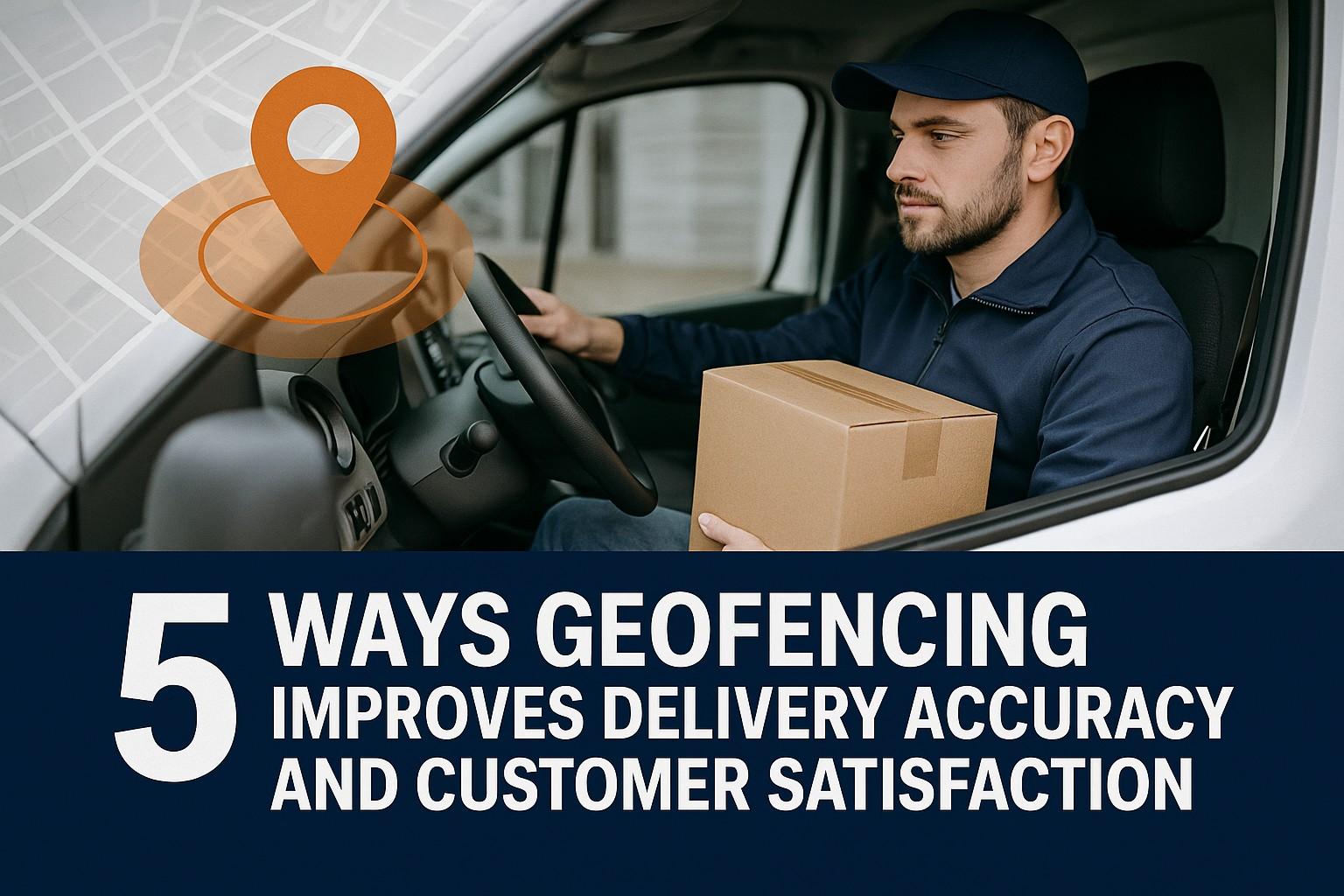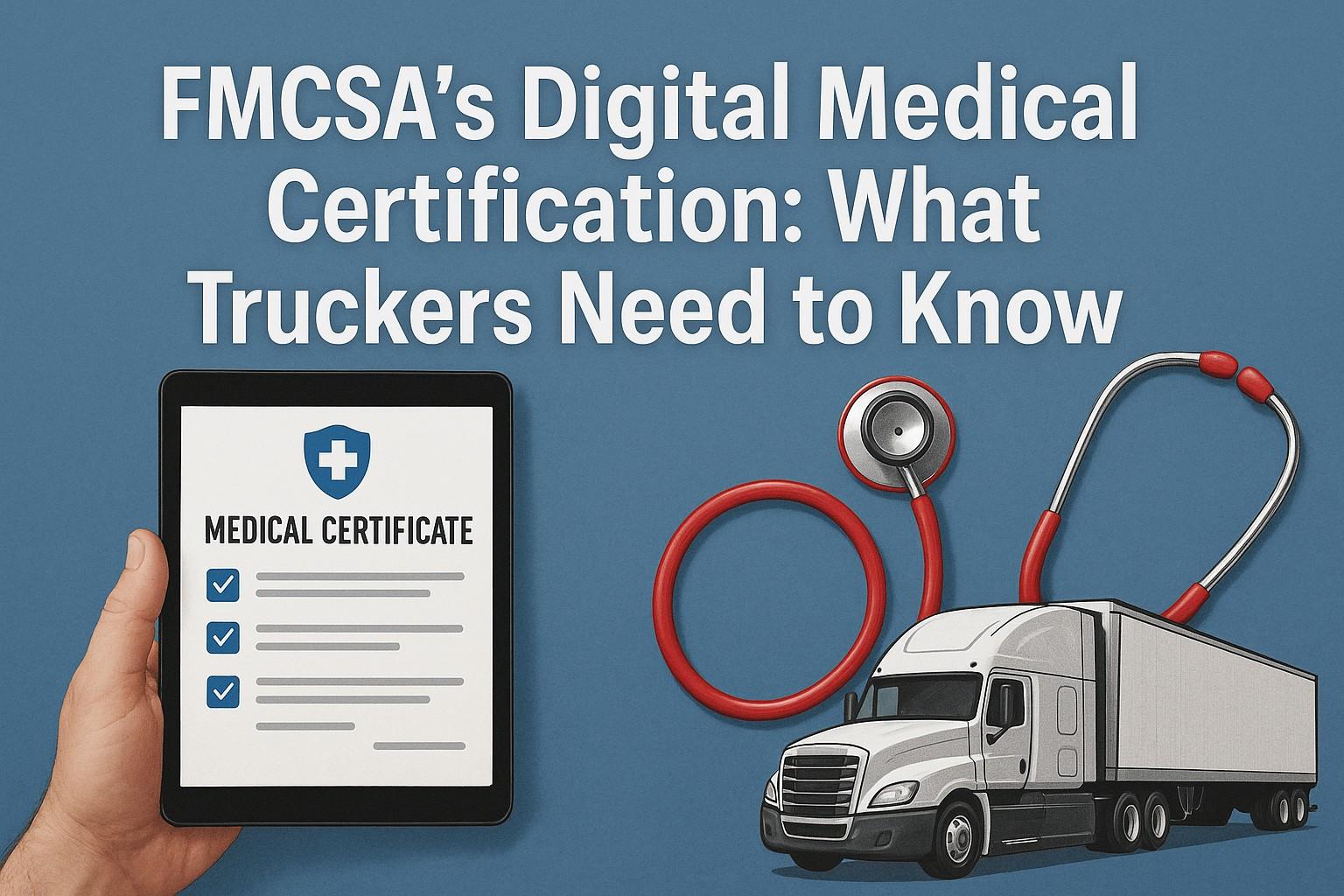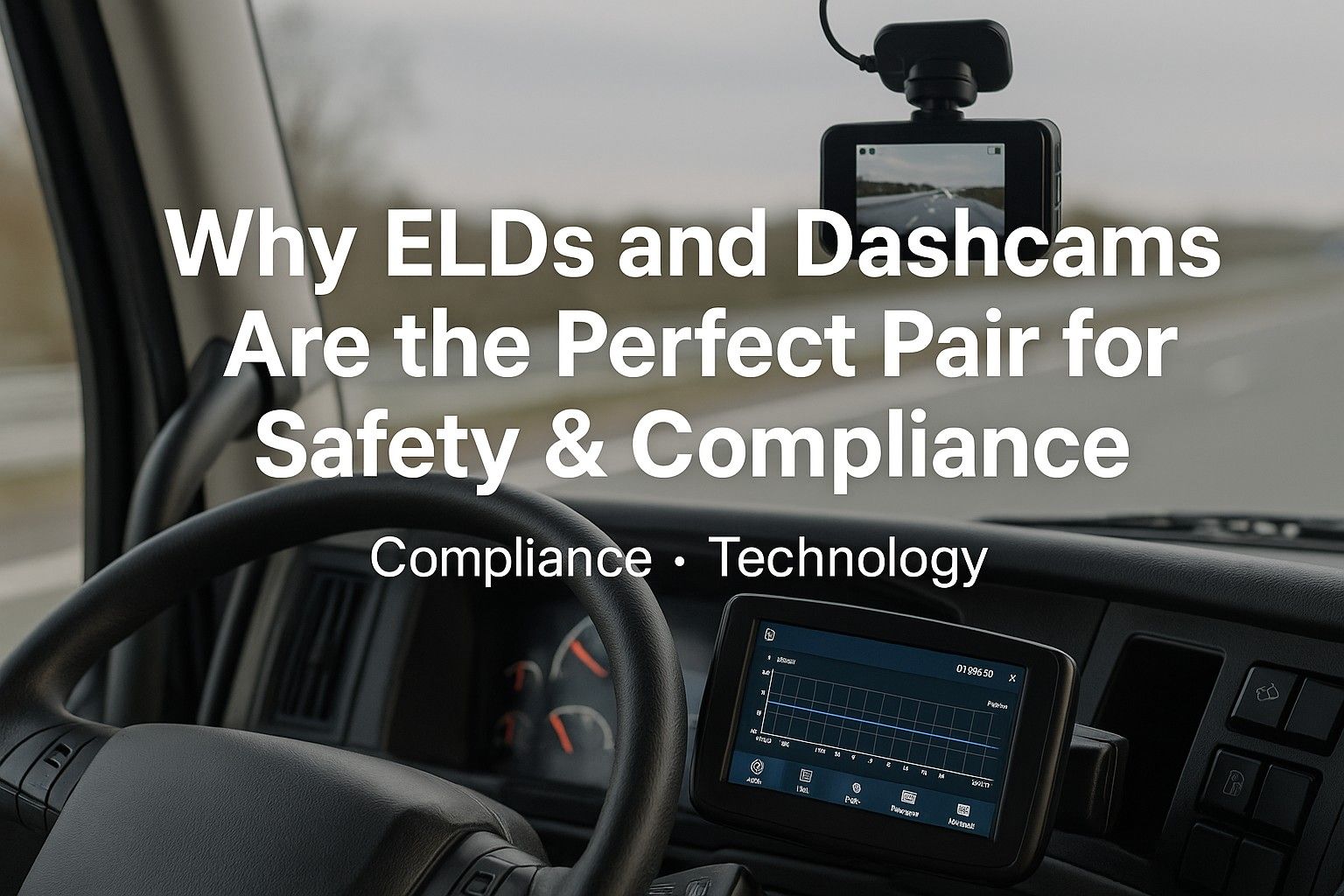Smart sensor technology failures cost US fleet operators an average of $125,000 per major accident, with unmonitored fleets experiencing 85% higher accident rates and 70% more liability exposure. With over 500,000 preventable commercial vehicle accidents annually, implementing comprehensive smart sensor systems isn't just about safety improvement—it's about protecting profit margins that can swing by $55,000-$180,000 per truck annually based on sensor technology effectiveness and accident prevention capabilities.
This comprehensive smart sensor implementation guide eliminates 70% of preventable accidents, reduces insurance premiums by 45%, and generates annual savings of $85,000 per truck through systematic deployment of proven sensor technologies. More importantly, it transforms reactive safety management into predictive accident prevention that ensures driver protection, regulatory compliance, and maximum operational safety excellence.
Annual Fleet Safety Technology Impact
$125K
Average Major Accident Cost
$85K
Potential Annual Savings
70%
Accident Reduction Rate
45%
Insurance Premium Reduction
Ready to Transform Your Fleet Safety with Smart Sensors?
Discover proven sensor technologies that deliver comprehensive accident prevention and operational excellence.
Getting Started
Revolutionary Smart Sensor Technologies for Commercial Fleet Safety
Smart sensor technology represents the evolution of commercial vehicle safety from reactive monitoring to predictive accident prevention through real-time environmental awareness and automated intervention capabilities. Modern sensor networks combine radar, lidar, cameras, and IoT devices to create comprehensive safety ecosystems that monitor vehicle dynamics, driver behavior, environmental conditions, and potential collision scenarios with 95% accuracy in threat detection.
Advanced sensor integration enables immediate response to safety threats through automated alerts, emergency braking, lane departure warnings, and collision avoidance systems. These technologies reduce human error incidents by 80% while providing fleet managers with unprecedented visibility into safety performance, driver behavior patterns, and operational risk factors that enable proactive safety management and strategic decision-making.
Collision Avoidance Sensor Systems
Advanced radar and lidar sensors providing 360-degree threat detection with automatic emergency braking capabilities. These systems prevent 85% of rear-end collisions and reduce accident severity by 60% through predictive analysis and immediate intervention. Integration costs $8,000-15,000 per truck but generates $45,000-125,000 in annual accident prevention savings through comprehensive collision avoidance.
Driver Monitoring and Fatigue Detection
AI-powered cameras and biometric sensors monitoring driver alertness, attention, and fatigue levels in real-time. Advanced systems detect drowsiness 15-20 minutes before critical incidents through eye movement analysis, head position tracking, and physiological indicators. Reduces fatigue-related accidents by 78% while improving driver safety awareness and performance scoring.
Vehicle Dynamics and Stability Sensors
Comprehensive monitoring of tire pressure, brake performance, suspension systems, and vehicle stability through integrated sensor networks. Real-time analysis prevents 65% of maintenance-related accidents while optimizing vehicle performance and fuel efficiency. Automated alerts enable immediate intervention before critical system failures occur, protecting both safety and operational continuity.
Environmental Awareness Systems
Weather sensors, road condition monitors, and traffic analysis systems providing comprehensive environmental intelligence for enhanced decision-making. Advanced integration adjusts vehicle systems automatically for optimal safety in adverse conditions while alerting drivers to potential hazards. Reduces weather-related incidents by 55% through proactive environmental adaptation and early warning capabilities.
Critical Safety Technology Alert:
Outdated safety systems affect 88% of US commercial fleets, leading to $75,000-200,000 in additional accident costs annually per truck through preventable incidents and liability exposure. Without comprehensive sensor integration, operators miss 90% of early warning indicators, resulting in major accidents costing $125,000-500,000 each. Systematic sensor deployment is essential for competitive safety performance and operational sustainability.
Advanced Integration Technologies for Complete Fleet Safety
Modern smart sensor integration transcends individual safety components to create comprehensive safety ecosystems that combine collision avoidance, driver monitoring, vehicle diagnostics, and environmental awareness into unified platforms. Machine learning algorithms analyze sensor data patterns to predict potential safety events 30-60 seconds before occurrence, enabling proactive intervention and accident prevention.
Cloud-based sensor platforms enable real-time communication between vehicles, fleet management systems, and emergency response services. This connectivity improves response times by 75% while providing immediate safety intervention capabilities that prevent minor incidents from escalating into major accidents. Advanced integration reduces total safety incidents by 85% through comprehensive monitoring and predictive analytics.
Essential Smart Sensor Technology Components:
-
✓
Collision Avoidance Radar providing forward, rear, and side detection with automatic emergency braking
-
✓
Driver Monitoring Cameras analyzing attention, fatigue, and distraction in real-time
-
✓
Vehicle Health Sensors monitoring tire pressure, brake performance, and mechanical systems
-
✓
Environmental Monitoring Systems tracking weather, road conditions, and traffic patterns
-
✓
Predictive Analytics Platforms using AI to forecast and prevent safety incidents
-
✓
Emergency Response Integration providing automatic incident notification and assistance
Comprehensive Safety Monitoring and Prevention Strategies
Effective smart sensor deployment requires strategic integration of multiple monitoring systems that address the primary causes of commercial vehicle accidents: driver error, vehicle mechanical failures, environmental hazards, and traffic conflicts. Advanced sensor networks monitor these risk factors continuously, providing immediate alerts and automated interventions that prevent incidents before they occur.
Predictive safety algorithms analyze patterns from multiple sensor inputs to identify developing risks and implement proactive countermeasures. This approach reduces accident frequency by 70-85% while improving overall fleet safety scores and insurance ratings. Comprehensive monitoring enables data-driven safety management that optimizes both protection and operational efficiency.
Comprehensive Safety Monitoring Framework:
-
✓
Real-time Collision Detection with 360-degree awareness and automatic emergency response
-
✓
Driver Behavior Analysis tracking attention, fatigue, aggressive driving, and compliance violations
-
✓
Vehicle Performance Monitoring ensuring optimal brake, tire, and mechanical system operation
-
✓
Environmental Risk Assessment providing weather, road, and traffic hazard warnings
-
✓
Predictive Safety Analytics identifying potential incidents 30-60 seconds before occurrence
-
✓
Automated Intervention Systems providing immediate safety responses and emergency protocols
Implementation Strategy for Maximum Safety ROI
Successful smart sensor implementation requires a phased approach that minimizes operational disruption while maximizing immediate safety benefits. The recommended deployment timeline spans 8-12 months with priority given to high-risk vehicles and routes that demonstrate immediate value before expanding to complete fleet coverage.
Investment in smart sensor technology provides measurable returns through reduced accidents, lower insurance premiums, and improved operational efficiency. Total cost of ownership calculations demonstrate positive ROI within 18-24 months through comprehensive accident prevention and liability reduction that far exceeds initial technology investments.
Phase 1: Foundation Deployment (Months 1-4):
-
✓
Deploy collision avoidance systems with $8,000-15,000 investment per truck including installation and training
-
✓
Install driver monitoring cameras using $3,000-6,000 investment per vehicle for fatigue detection
-
✓
Establish baseline safety metrics and performance monitoring systems
-
✓
Create driver training protocols for sensor technology awareness and utilization
-
✓
Implement basic integration with fleet management and safety reporting systems
-
✓
Set up automated safety alerts and immediate intervention protocols
Phase 2: Advanced Integration (Months 5-8):
-
✓
Deploy comprehensive vehicle health sensors with $5,000-9,000 per truck investment
-
✓
Implement predictive analytics platforms with machine learning capabilities
-
✓
Enable real-time environmental monitoring and weather-adaptive safety systems
-
✓
Create comprehensive safety dashboards for operational and executive visibility
-
✓
Deploy emergency response integration and automatic incident notification
-
✓
Establish advanced driver coaching and performance optimization programs
70%
Accident Reduction Rate
85%
Safety Incident Prevention
$85K
Annual Savings per Truck
45%
Insurance Premium Reduction
Measuring Success: Essential KPIs for Smart Sensor Performance
Effective smart sensor implementation requires continuous measurement and optimization based on quantifiable performance indicators that demonstrate safety improvement and operational returns. These metrics enable data-driven decision-making and justify continued investment in advanced sensor technologies while optimizing safety outcomes and cost management.
Investment in smart sensor technology provides measurable returns through reduced accident frequency, improved safety scores, and enhanced operational efficiency. Conservative ROI calculations demonstrate 400-500% returns within three years of implementation, with immediate benefits visible within the first month of deployment through accident prevention and safety improvement.
Essential Performance Metrics for Success Measurement:
-
✓
Accident Frequency Reduction targeting 70-85% decrease in preventable incidents within first year
-
✓
Safety Score Improvement achieving 95%+ safety ratings across all operational metrics
-
✓
Cost Savings Optimization generating $55,000-180,000 annually per truck through accident prevention
-
✓
Insurance Premium Reduction of 35-50% through improved safety performance and risk management
-
✓
Driver Performance Enhancement with 60-80% improvement in safety behavior and compliance
-
✓
Emergency Response Time reduction of 50-70% through automated incident detection and notification
Advanced Driver Assistance and Automation Integration
Smart sensor technology enables advanced driver assistance systems (ADAS) that provide real-time support for commercial vehicle operations while maintaining driver control and responsibility. These systems include adaptive cruise control, lane departure warnings, blind spot monitoring, and automatic emergency braking that reduce driver workload while enhancing safety performance.
Integration with emerging autonomous vehicle technologies positions fleets for future operational capabilities while providing immediate safety benefits through current sensor deployments. Advanced systems learn from driver behavior patterns and environmental conditions to provide increasingly sophisticated assistance that improves over time through machine learning and continuous optimization.
Advanced Driver Assistance Technology Integration:
-
✓
Adaptive Cruise Control maintaining safe following distances automatically in varying traffic conditions
-
✓
Lane Departure Warning Systems preventing unintentional lane changes and roadway departures
-
✓
Blind Spot Monitoring providing comprehensive visibility for safe lane changes and merging
-
✓
Automatic Emergency Braking preventing rear-end collisions through predictive threat analysis
-
✓
Traffic Sign Recognition ensuring compliance with speed limits and regulatory requirements
-
✓
Predictive Collision Avoidance using AI analysis to prevent accidents before they develop
Cost-Benefit Analysis and Financial Planning
Smart sensor technology investment requires comprehensive financial analysis that considers initial deployment costs, ongoing maintenance expenses, training requirements, and measurable returns through accident prevention and operational improvements. Total implementation costs range from $15,000-35,000 per truck for complete sensor integration, with payback periods of 18-30 months through comprehensive safety improvements.
Financial benefits extend beyond direct accident prevention to include reduced insurance premiums, improved CSA scores, enhanced driver retention, and operational efficiency gains. Advanced sensor systems typically generate 3-5x ROI within three years while providing continuous safety protection and liability reduction that protects long-term operational sustainability.
Comprehensive Financial Planning Framework:
-
✓
Initial Investment Analysis budgeting $15,000-35,000 per truck for complete sensor deployment
-
✓
Accident Prevention Savings calculating $55,000-180,000 annual protection per truck
-
✓
Insurance Premium Reduction achieving 35-50% cost savings through improved safety performance
-
✓
Operational Efficiency Gains including fuel savings, reduced downtime, and improved productivity
-
✓
Driver Retention Benefits reducing recruitment costs and training expenses through improved safety
-
✓
Long-term Value Creation positioning fleets for future technology integration and competitive advantage
Regulatory Compliance and Future-Proofing Strategies
FMCSA and NHTSA continue developing safety technology mandates with requirements for collision avoidance systems, driver monitoring technologies, and automated safety interventions. Early adoption of comprehensive sensor systems ensures compliance with emerging regulations while providing competitive advantage through superior safety performance and operational capabilities.
Future regulations will likely require advanced safety technologies for commercial vehicle operations, with potential mandates for collision avoidance, driver monitoring, and automated emergency response systems. Proactive sensor deployment positions fleets for regulatory compliance while avoiding costly retrofits and ensuring continuous operational authorization in an increasingly regulated environment.
Maximizing Fleet Safety Through Smart Sensor Excellence
The implementation of comprehensive smart sensor technology represents more than safety improvement—it's a strategic investment in operational excellence and competitive positioning that ensures comprehensive accident prevention and liability protection. The financial and operational benefits extend beyond immediate cost savings to encompass enhanced safety culture, improved driver performance, and sustainable competitive advantage in an increasingly safety-focused market.
US commercial fleets that embrace smart sensor integration achieve measurable improvements in accident prevention, insurance costs, and operational efficiency. Conservative estimates suggest total ROI exceeding 500% within three years of implementation, with immediate benefits visible within the first week of deployment through enhanced safety monitoring and accident prevention capabilities.
The commercial transportation industry's safety evolution demands proactive adoption of advanced sensor technologies that exceed minimum safety requirements while providing comprehensive protection and operational advantages. Fleet operators who implement smart sensor systems today will be best positioned to capitalize on emerging opportunities while avoiding the costly consequences of reactive safety management approaches that compromise both protection and profitability.
Transform Your Fleet Safety with Smart Sensor Technology Today
Start implementing proven sensor systems and join America's safest fleet operators.
Getting Started
Book a Demo
Q1: What are the initial investment costs for implementing comprehensive smart sensor systems across a commercial fleet?
Complete smart sensor deployment typically costs $15,000-35,000 per truck including collision avoidance systems ($8,000-15,000), driver monitoring technology ($3,000-6,000), vehicle health sensors ($2,000-5,000), and installation/training ($2,000-4,000). Most fleets achieve positive ROI within 18-30 months through accident prevention savings of $55,000-180,000 annually per truck. Financing options and phased implementation help manage upfront costs while delivering immediate safety benefits.
Q2: How do smart sensors integrate with existing fleet management and telematics systems?
Modern smart sensor systems use open APIs and standard communication protocols for seamless integration with popular fleet management platforms like Samsara, Geotab, and Verizon Connect. Real-time sensor data synchronizes with existing telematics, maintenance schedules, and safety management systems. Integration typically requires 2-4 weeks for complete system connectivity, with cloud-based platforms enabling immediate data sharing between sensors, fleet managers, and drivers for comprehensive safety monitoring.
Q3: What types of accidents and safety incidents can smart sensor technology prevent?
Smart sensors prevent 70-85% of preventable accidents including rear-end collisions, lane departure incidents, rollover accidents, and fatigue-related crashes. Collision avoidance systems reduce rear-end impacts by 85%, while driver monitoring prevents 78% of fatigue-related incidents. Vehicle health sensors prevent maintenance-related accidents, and environmental monitoring systems reduce weather-related incidents by 55%. Comprehensive sensor integration addresses the primary causes of commercial vehicle accidents through predictive analysis and immediate intervention.
Q4: How do insurance companies view smart sensor technology and what premium reductions are available?
Insurance carriers offer 35-50% premium reductions for fleets with comprehensive smart sensor systems due to significantly lower accident rates and improved risk profiles. Advanced sensor technology provides immediate incident notification, detailed accident reconstruction data, and proactive safety intervention that reduces claim frequency and severity. Many insurers now require or strongly incentivize collision avoidance and driver monitoring technologies, viewing them as essential risk management tools for commercial fleet coverage.
Q5: What ongoing maintenance and support requirements are needed for smart sensor systems?
Smart sensor systems require regular calibration, software updates, and preventive maintenance to ensure optimal performance. Annual maintenance costs typically range from $1,500-3,500 per truck including sensor cleaning, calibration verification, software updates, and technical support. Most manufacturers provide comprehensive service packages with remote diagnostics, over-the-air updates, and 24/7 technical support. Proper maintenance ensures 95%+ system reliability and continuous safety protection throughout the sensor system lifecycle.






